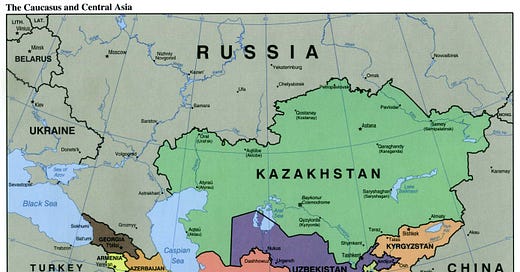If a Hollywood filmmaker were to write a story about the foreign policies of Central Asian nations, multi-vectorism—their most defining characteristic—would hardly be a key element. It would escape attention not because it is unimportant, but because it doesn’t make for a compelling story on its own. Multi-vectorism, so what? That would likely be the writer’s reaction. It lacks the drama, the tension, the clear-cut heroes and villains that make for compelling cinema. That cinematic absence of narrative mirrors a real-world problem: Central Asia lacks a long-term vision. A quick survey of the foreign policy discourse or expert community debates would reveal this lack of vision.
After exploring or being drawn into diverse integration projects for decades now, there must be an integration fatigue in Central Asia. At least, they have ceased to mean anything more than an informal coordination "ploshadka" - a platform. The exclusive Central Asia format also appears to have reached a saturation point. It functions primarily as a platform for informal coordination on regional issues and engagement with extra-regional actors and for addressing disputes over borders and water resources. There appears to be little momentum for pursuing more ambitious forms of regionalism.
On the one hand, these nations join the others within the Shanghai Cooperation Organisation to declare the multipolar world order, emphasising sovereignty, non-interference, and multilateralism under the UN. On the other hand, Uzbekistan, a key player in the region, gets heavily indebted to external actors. It is not only about the lack of normative commitments. Multi-vectorism does not offer a vision for how Central Asia will position itself on the international stage once it has reaped the benefits of its current engagement with diverse regional and global actors. At its core, it is merely a survival strategy. On its own, multivectorism cannot explain the region's trajectory once the immediate concern of survival fades.
However, the current success of multi-vectorism should not be taken for granted by Central Asian nations. This very openness can also create vulnerabilities. Externally, multi-vectorism can foster competition among the states in the region, weakening collective agency. Internally, multi-vectorism can be exploited by competing elite factions who can align with different foreign powers to bolster their own positions. This not only may undermine national cohesion but can also strengthen external influence on domestic political struggles.
To move beyond survival and avoid divisions, Central Asia must recognise the limits of multi-vectorism and articulate a shared vision rooted in regional solidarity, institutional capacity, and a collective voice on the global stage. Such a vision should also bridge the shared concern of the political regimes for the preservation of autonomy and the necessity of regional integration. The path forward requires more than diplomatic balancing. It demands a conscious effort to turn geographic centrality, now gained thanks to multi-vectorism, into visionary, political and institutional coherence. Only then can Central Asia transform from a region defined by others into one that defines itself.





